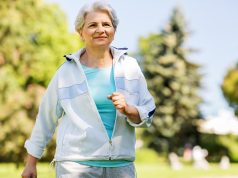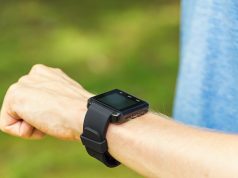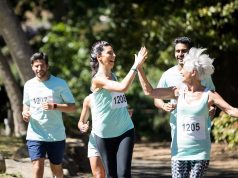The American College of Sports Medicine 61st Annual Meeting and 4th World Congress on Exercise is Medicine
The annual meeting of the American College of Sports Medicine was held from May 26 to May 30 in San Diego and attracted more than 6,000 participants from around the world, including clinicians, academicians, allied health professionals, and others interested in sports medicine. The conference highlighted recent advances in exercise science and sports medicine, with presentations focusing on the advancement and integration of scientific research to improve clinical practice.
During one session, Aaron Baggish, M.D., of Massachusetts General Hospital in Boston, discussed how all individuals should exercise and that the ideal goal should be to accrue approximately 150 minutes of moderate intensity aerobic activity per week.
“Exercise has health benefits for every single person. Those who benefit the most are those who start from a sedentary baseline and start doing something, anything,” Baggish said. “Health benefits appear to be maximal from approximately 150 minutes of moderate intensity aerobic activity. But those who can only do less still benefit from doing something, and for those who choose to do more, there is no reason at this point to conclude that this comes with any substantial cardiovascular harm.”
Abstract No. A-20
During another session, Barry Franklin, Ph.D., of William Beaumont Hospital in Royal Oak, Mich., discussed how preoperative cardiorespiratory fitness, expressed as ml/kg/min or as metabolic equivalents (METs), is an excellent predictor of surgical morbidity and mortality in middle-aged and older adults. In addition, some data suggest that the anaerobic or ventilatory threshold may also be helpful in risk stratifying patients prior to surgery.
“Physicians should increasingly employ regular or cardiopulmonary exercise testing to estimate or directly measure cardiorespiratory fitness, respectively, prior to major surgical procedures. Low fitness levels (less than approximately 5 METs) generally identify a higher-risk patient subset,” Franklin said. “This may be due to numerous factors, including a reduced capacity to tolerate the aerobic and cardiac demands of major surgery, greater difficulty in operating on these deconditioned/unfit patients (e.g., prolonged intubation times), and/or the fact that these may represent patients with a heightened inflammatory response that may lead to increased postoperative complications.”
Abstract No. A-04
During a session focused on physical activity across an individual’s lifespan, J. Carson Smith, Ph.D., of the University of Maryland in Baltimore, discussed how physical activity impacts older adults, including older adults with increased risk of Alzheimer’s disease (AD) and those with AD.
“Studies have demonstrated that individuals with AD involved in exercise exhibit improved physical function and improvement in psychological profiles, including less depression and anxiousness,” Smith said. “Exercise has a small impact on cognitive function but does not reverse dementia — there are only modest effects seen.”
According to Smith, patients with an earlier stage of AD, those with mild cognitive impairment (MCI), benefited more from exercise. Studies have shown that exercise training improved efficiency of neural networks in patients with MCI. Patients involved in physical activity used less neural resources to remember identical information.
“In patients with no cognitive symptoms tied to AD but at risk for AD, studies have shown that physical activity appears to counteract genetic risk of AD,” Smith added. “Individuals at risk for AD who are physically active are less likely to decline cognitively over time in their 60s and 70s. They are also more likely to maintain the structural integrity of the brain and develop less accumulation of amyloid.”
Abstract No. D-54
Copyright © 2015 HealthDay. All rights reserved.







